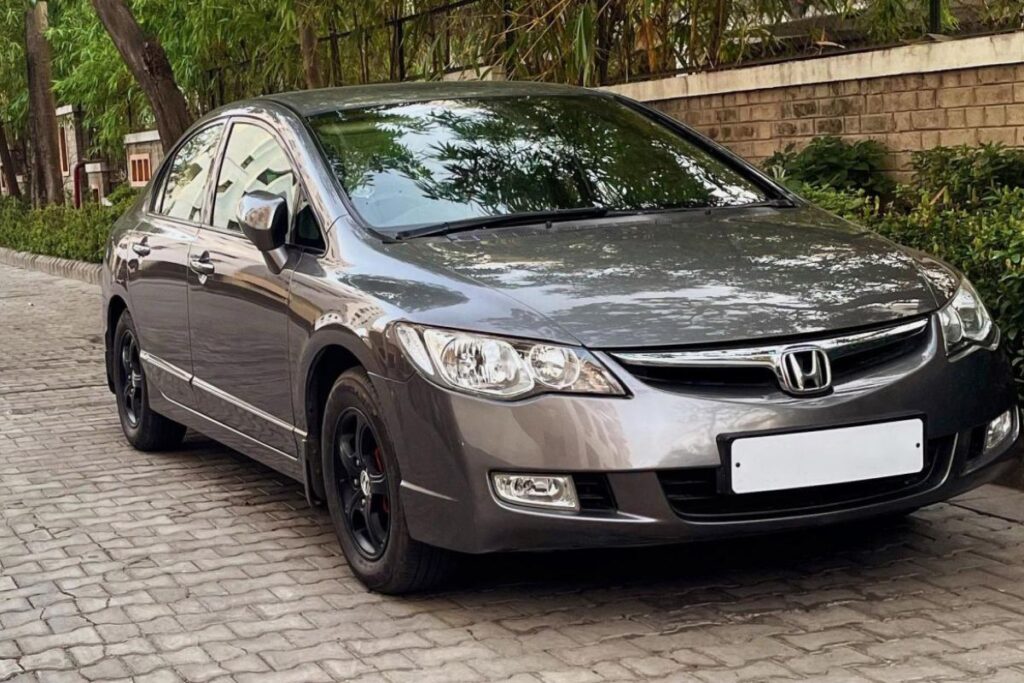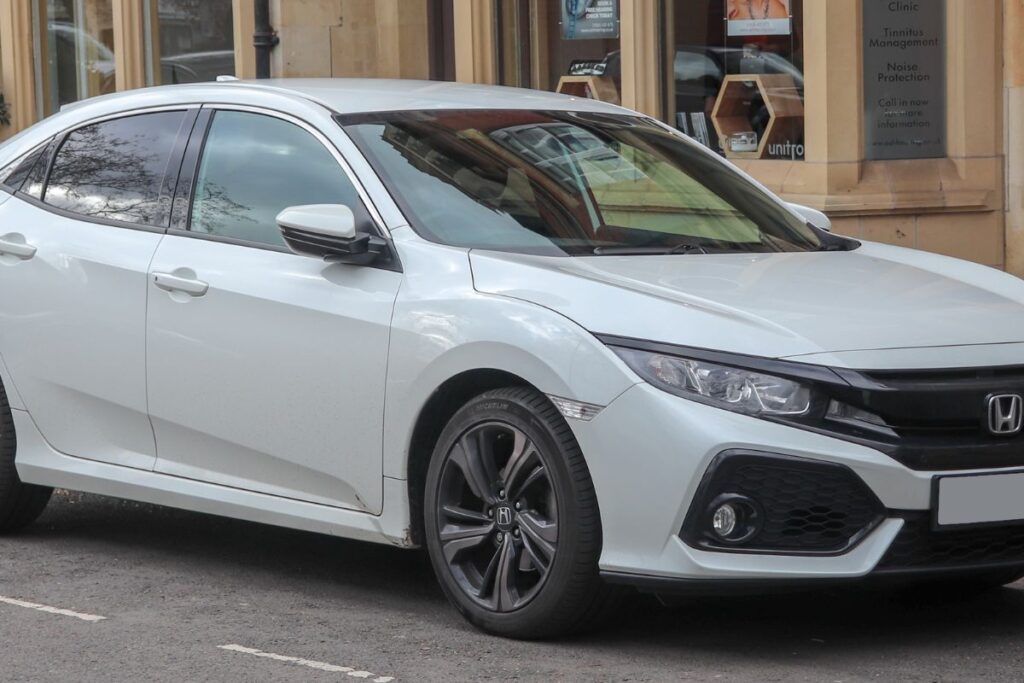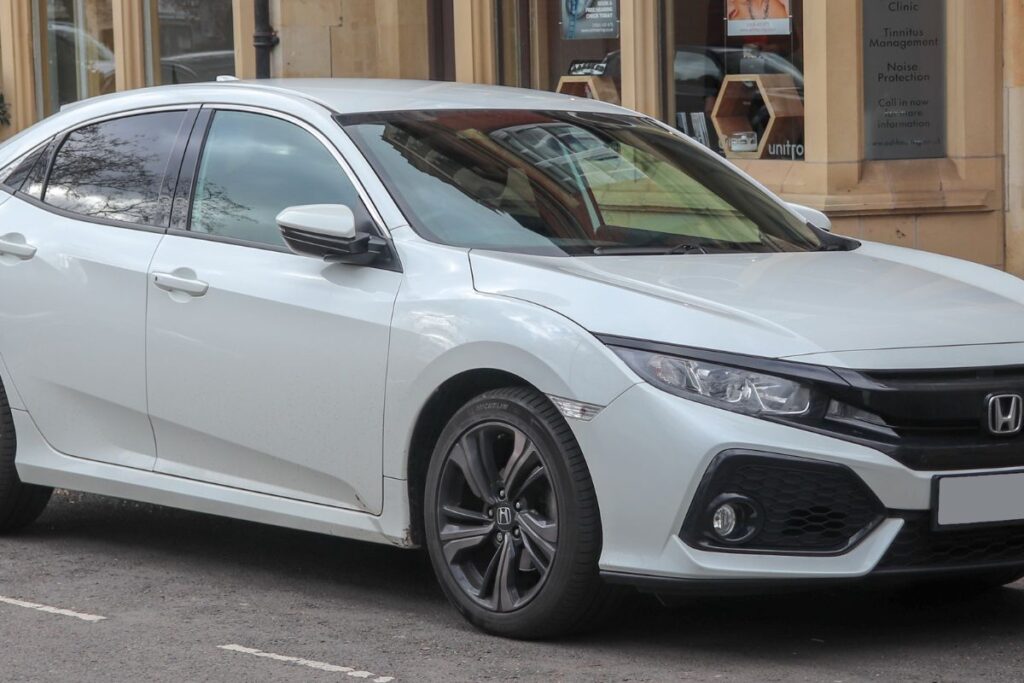Best & Worst Honda Civic Years — which to avoid
In this guide, I’ve studied every Honda Civic model from 2001 to the latest. I’ll highlight the best and worst years to buy one.
I’ve used trusted sources like NHTSA, Consumer Reports, and J.D. Power. They provide insights into each generation’s evolution, performance, and reliability.
You’ll know the ideal years to buy a Honda Civic. I’ll also discuss issues like AC problems. Additionally, I’ll point out the most reliable options.
Let’s dive in and ensure you make an informed decision when picking your next Honda Civic.
Honda Civic Generations
The Honda Civic, a famous compact car, first appeared in 1972. Its first model was crucial. It brought affordable, fuel-efficient transport during energy crises. Let’s now review Civic models from 2001 to today.
| Generation | Years |
|---|---|
| 7th generation (ES/EN) | 2001-2005 |
| 8th generation (FA1) | 2006-2011 |
| 9th generation (FB) | 2012-2015 |
| 10th generation (FC1/FC2/FC5) | 2016-2021 |
| 11th generation (FE) | 2022-Present |
Knowing these changes is key for potential buyers. It helps compare model years. Specific updates in each generation can be deciding factors between Civic models.
Honda Civic Best, Neutral, and Worst Years
We carefully studied the Honda Civic to identify its best, average, and worst years. Our research looked at various factors, including:Owner-reported reliability through surveys
- Annual maintenance costs
- Safety ratings from authoritative sources
- Consumer Reports reliability scores and owner satisfaction scores
- NHTSA recalls, investigations, and complaints
- Ratings from Edmunds, JD Power, Kelley Blue Book (KBB), VehicleHistory, and Cars.com
In the next graph, we’ll show ratings from the mentioned platforms. It will give you an insightful view of the Honda Civic’s performance across different years.
Honda Civic Car Smite Score Combined Overall Score
In the table below, I’ve sorted each Honda Civic model year as the best, neutral, or worst. I did this based on our analysis and the data from the sources I mentioned.
| Generation | Best Years | Neutral Years | Worst Years |
|---|---|---|---|
| 7th generation (ES/EN) | 2004 2005 | N/A | 2001 2002 2003 |
| 8th generation (FA1) | 2009 2010 2011 | N/A | 2006 2007 2008 |
| 9th generation (FB) | 2013 2014 2015 | N/A | 2012 |
| 10th generation (FC1/FC2/FC5) | 2019 2020 2021 | 2017 2018 | 2016 |
| 11th generation (FE) | 2024 | N/A | 2022 |
“Neutral Years” are those that neither stood out as the best nor faced major issues. They didn’t receive much negative feedback.
Factors like NHTSA recalls greatly affect our views. More complaints and recalls reduce a car’s reliability.
Next, we will review the specs and details of the top, neutral, and worst Honda Civic years. This will give you a clear picture of each model’s performance and reliability.
Best & Worst Years for Honda Civic 7th Generation (2001-2005)

The 7th generation Honda Civic came out in 2000. It was a pivotal moment for the lineup. It showed big changes in design and engineering.
The Best Years: 2004, 2005
The Honda Civic excelled in 2004 and 2005. It offered great fuel economy, with 21 mpg in the city and 40 mpg on the highway. Moreover, it received high Edmunds ratings, making it the best of the 7th generation.
These models featured various engine options. The 1.7L SOHC VTEC engine was a popular choice. They also came with a 4-speed automatic or 5-speed manual transmission.
Buyers could choose from trims like the base-level DX or the sporty Si. The Civic also added features like better audio systems, power lock doors, and improved air conditioning.
Safety features were standard. These included anti-lock brakes, dual front airbags, and side airbags in the EX trim. However, some owners reported minor electronic glitches, especially with the radio and power windows.
The Worst Years: 2001, 2002, 2003
Avoid getting 2001, 2002, and 2003 Honda Civics. They have many faults in their transmissions, leading to costly repairs.
Owners faced slipping transmissions, slow gear changes, and even complete failures. These models also had recalls. For example, the 2001 model was recalled for lighting and fuel pump issues, which could cause sudden engine shutdowns.
In 2002 and 2003, Honda tried to fix these problems. However, CVT transmissions and electrical issues remained. Still, these models had good fuel efficiency and were compact and nimble.
For more details, check NHTSA records for the 2001 to 2005 Honda Civic.
Best & Worst Years for Honda Civic 8th Generation (2006-2011)

The 8th generation Honda Civic came out in 2006. It had a futuristic redesign with a two-tier dashboard and more aggressive body lines.
The Best Years: 2009, 2010, 2011
The 2009, 2010, and 2011 models of the 8th generation Civic are known for their reliability and performance. Among these, the 2011 model shines with better fuel economy.
These cars featured a 1.8L SOHC i-VTEC engine and a choice of 5-speed automatic or manual transmissions. They offered solid fuel efficiency and good horsepower. Trim options varied from the basic DX to the well-equipped EX and the sporty Si.
In addition, these years introduced the Civic Hybrid with an Integrated Motor Assist system. They also brought the natural-gas-powered GX, known for its low emissions. Technology inclusions, like advanced navigation, USB audio, and stability control, were available on more trims.
The Worst Years: 2006, 2007, 2008
Avoid buying the 2006, 2007, and 2008 Honda Civic models. They have serious problems. These include engine cracks, leading to coolant leaks. Honda didn’t recall these cars but settled a lawsuit. This led to engine replacements for many owners.
Suspension issues were common too. The rear tires wore out fast due to a design flaw. This problem also caused recalls. They covered major components, like the engine, and simple issues, like lighting.
For more details, check the NHTSA’s records on these models.
Best & Worst Years for Honda Civic 9th Generation (2012-2015)

It was introduced in 2012. The 9th generation Honda Civic changed a lot. It refined its looks and improved its technology.
The Best Years: 2013, 2014, 2015
The 9th generation Honda Civic stood out from 2013 to 2015. It earned high ratings from Consumer Reports, VehicleHistory, and Cars.com.
These years featured a 1.8L four-cylinder engine with a 5-speed manual or CVT. They balanced performance and fuel efficiency. Trim options included the LX, EX, Si, HF, and EX-L.
In 2013, the Civic got a stylish upgrade, improving both the exterior and interior. It now boasted better materials, ergonomics, and an advanced infotainment system.
The 2014 model introduced “HondaLink” for smartphone integration, navigation, and more. It also added “Honda LaneWatch” for safer driving.
However, some users found the CVT’s response a bit slow, which was a minor issue.
The Worst Years: 2012
Avoid the 2012 Honda Civic in the 9th generation. Critics didn’t like its bland design and noted issues with ride quality, cabin noise, and various problems.
Owners faced power steering failures, unpredictable transmission issues, and electrical malfunctions. There was a recall for a faulty left driveshaft that could cause power loss.
Despite some positive reviews, notably from J.D. Power, improvements were needed. For more on recalls and complaints, check NHTSA records for the 2012 model.
Best, Neutral & Worst Years for Honda Civic 10th Generation (2016-2021)

In 2016, Honda introduced its 10th generation Civic. It featured a bold and new design that showed a futuristic look.
The Best Years: 2019, 2020, 2021
The 2019, 2020, and 2021 Civics topped lists from Consumer Reports, VehicleHistory, Cars.com, and Kelley Blue Book.
They came with two engine options: a 2.0L four-cylinder for balance and a turbocharged 1.5L for performance and economy.
Buyers could choose between a 6-speed manual or a CVT. Trim options ranged from the basic LX to the sporty Sport, feature-rich EX, efficient EX-L, and luxurious Touring.
New features included the Honda Sensing Suite with safety tech and an updated infotainment system. This system offered a larger touchscreen, Apple CarPlay, Android Auto, and better voice control.
The Neutral Years: 2017, 2018
In 2017 and 2018, Honda’s Civic models transitioned from 2016, aiming for better performance. The engines stayed the same, but tweaks improved the CVT’s response based on feedback.
Safety got a boost too. Honda Sensing features slowly became standard in all trims. Also, the Hatchback, with extra space and European style, made a comeback.
The Worst Year: 2016
In contrast, the 2016 Civic is the 10th generation’s most problematic year. Owners often reported sticky, jerky steering wheels. This made driving uncomfortable. The AC system also had issues, with many complaints of malfunctions and Freon leaks. However, Honda extended the condenser warranty to address this. The infotainment system, though advanced, often lagged and had glitches.
For more details on recalls and complaints, check the NHTSA records for the 2016, 2017, and 2018 Civic models.
Best & Worst Years for Honda Civic 11th Generation (2022-2023)

The 11th generation Honda Civic debuted in a new era. It had a sense of maturity and refinement. This was a departure from the bold and aggressive design of its predecessor.
The Best Year: 2023
In 2023, the Honda Civic led its class. It sported a sleeker look, showing cleaner lines for a more grown-up appearance. Inside, minimal design, better ergonomics, and tactile feedback made driving more enjoyable.
The Civic came in four trims: LX, Sport, EX, and Touring. The LX and Sport models featured a 2.0-liter four-cylinder engine. Meanwhile, the EX and Touring models boasted a turbocharged 1.5-liter four-cylinder engine. All sedans and liftbacks came with a CVT. The liftback Sport and Sport Touring models could also opt for a 6-speed manual.
Its fuel efficiency was excellent, with 23 mpg in the city and 44 mpg on the highway. This showcased its ability to save fuel without sacrificing performance.
The Worst Year: 2022
In 2022, the 11th generation Honda Civic had some initial problems. Firstly, the sticky steering wheel issue from the previous model continued. This raised concerns about driving and user experience.
Moreover, some users reported random system glitches. These mainly involved the Collision Mitigation System and Adaptive Cruise Control. They sometimes activated when not needed.
For more information on recalls and complaints, check the NHTSA records for the 2022 Honda Civic.
Conclusion
We’ve looked at the Honda Civic’s history and found standout model years. The 2011 8th generation and 2023 11th generation, for example, shine for their performance, reliability, and features.
I prefer the latest models, especially the 10th and 11th generations. They offer sleek designs, advanced tech, and better fuel efficiency.
Though I haven’t driven a Honda Civic, the data I’ve seen matches our findings. Positive feedback from owners and reviewers supports these top model years.
Now, I’m eager to hear from you! Which Honda Civic generation do you like? And do you have experiences that match our insights? Please share in the comments below!






